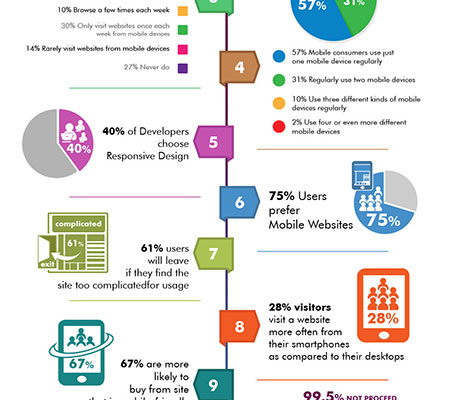Wondering Exactly How To Improve Your Site'S Style? Discover The Necessary Dos And Donts Of Typography For An Exciting On-Line Presence
Wondering Exactly How To Improve Your Site'S Style? Discover The Necessary Dos And Donts Of Typography For An Exciting On-Line Presence
Blog Article
Web Content Writer-Scott Fallesen
Boost your web design by selecting easy-to-read typefaces and suitable dimensions. Choose clear sans-serif or serif font styles for better readability. Adhere to 2-3 font styles for consistency. Avoid small dimensions that strain the eyes. Focus on simplicity over complexity. These pointers will certainly assist you produce a visually appealing and engaging web site effortlessly.
Typography plays a crucial duty in website design, and it is necessary to recognize the very best practices for using typefaces successfully.
DO:
* Pick fonts that are easy to read and regular throughout the website.
* Use headings and subheadings to produce aesthetic hierarchy and enhance readability.
* Use font dimensions and line spacing to produce a clear and well organized layout.
* Try out different font style combinations to develop an one-of-a-kind and aesthetically enticing design.
DON'T:
* Use too many different typefaces, as this can create aesthetic mess and make the website appearance unprofessional.
* Usage fonts that are also elaborate or illegible, as this can make the material difficult to comprehend.
* Usage typeface dimensions that are also small or too large, as this can make the web content difficult to read or aesthetically frustrating.
* neglect to check the web site's typography across various tools and screen dimensions, as this can affect the design and readability of the material.
Significance of Typography in Website Design
Typography plays an important role in website design by improving readability, aesthetic allure, and overall user experience. When made use of efficiently, typography can communicate the tone and message of your content, making it less complicated for customers to engage with your internet site. Selecting the appropriate typefaces, dimensions, spacing, and colors can dramatically influence just how site visitors perceive and communicate with your website.
The readability of your web site is straight linked to the typography options you make. Picking legible fonts and appropriate typeface dimensions ensures that customers can conveniently consume the information on your web pages without straining their eyes. Additionally, correct spacing in between lines and paragraphs can improve understanding and guide customers through the web content flawlessly.
Furthermore, typography contributes to the aesthetic charm of your web site. By creating a harmonious combination of typefaces and shades, you can develop a cohesive design that captivates customers. Consistent typography across different sections of your website likewise helps in maintaining an expert and sleek look, improving the total customer experience.
Dos of Typography
To enhance the readability and aesthetic appeal of your website, ensure that you select font styles that are very easy to check out and properly sized. Select font styles that are clear and legible, such as sans-serif or serif typefaces, which are typically used for body text. Sans-serif font styles like Arial or Helvetica function well for digital screens, providing a contemporary and clean appearance. On the other hand, serif fonts like Times New Roman or Georgia can add a touch of beauty and practice to your internet site.
ada compliance online to think about is font sizing. Make sure your message is big enough to be read comfortably without stressing the eyes. Select a font style dimension of a minimum of 16px for body text to make sure readability. In addition, use various font sizes to develop an aesthetic hierarchy on your site. Headings and subheadings should be larger and bolder than the body text, leading the reader through the content effortlessly.
Donts of Typography
Stay away from making use of an excessive variety of font styles in your web design to preserve consistency and readability for your target market. When it comes to typography, less is usually more.
Below are some vital 'Do n'ts' to keep in mind:
1. ** Stay clear of utilizing way too many various fonts **: Limit yourself to 2-3 typefaces for your whole website. Using business search engine optimisation can make your design appearance messy and less than professional.
2. ** Do not make use of fonts that are illegible **: Fancy or excessively ornamental typefaces might look appealing, yet if they give up readability, they aren't worth it. Adhere to fonts that are easy on the eyes.
3. ** Steer clear of making use of tiny font sizes **: Little message might appear smooth, however if it's also little, it can stress your visitors' eyes. Ensure straight from the source is big enough to read pleasantly on all tools.
Final thought
So, keep in mind, when it concerns typography in website design,
do pick typefaces wisely, keep it straightforward, and prioritize readability.
However do not overdo with way too many font styles, dimensions, or colors.
Nevertheless, the key to wonderful layout is usually located in the simplicity of typography.
So, next time you're working on a web site, bear in mind that sometimes less is a lot more - even when it concerns typefaces.
